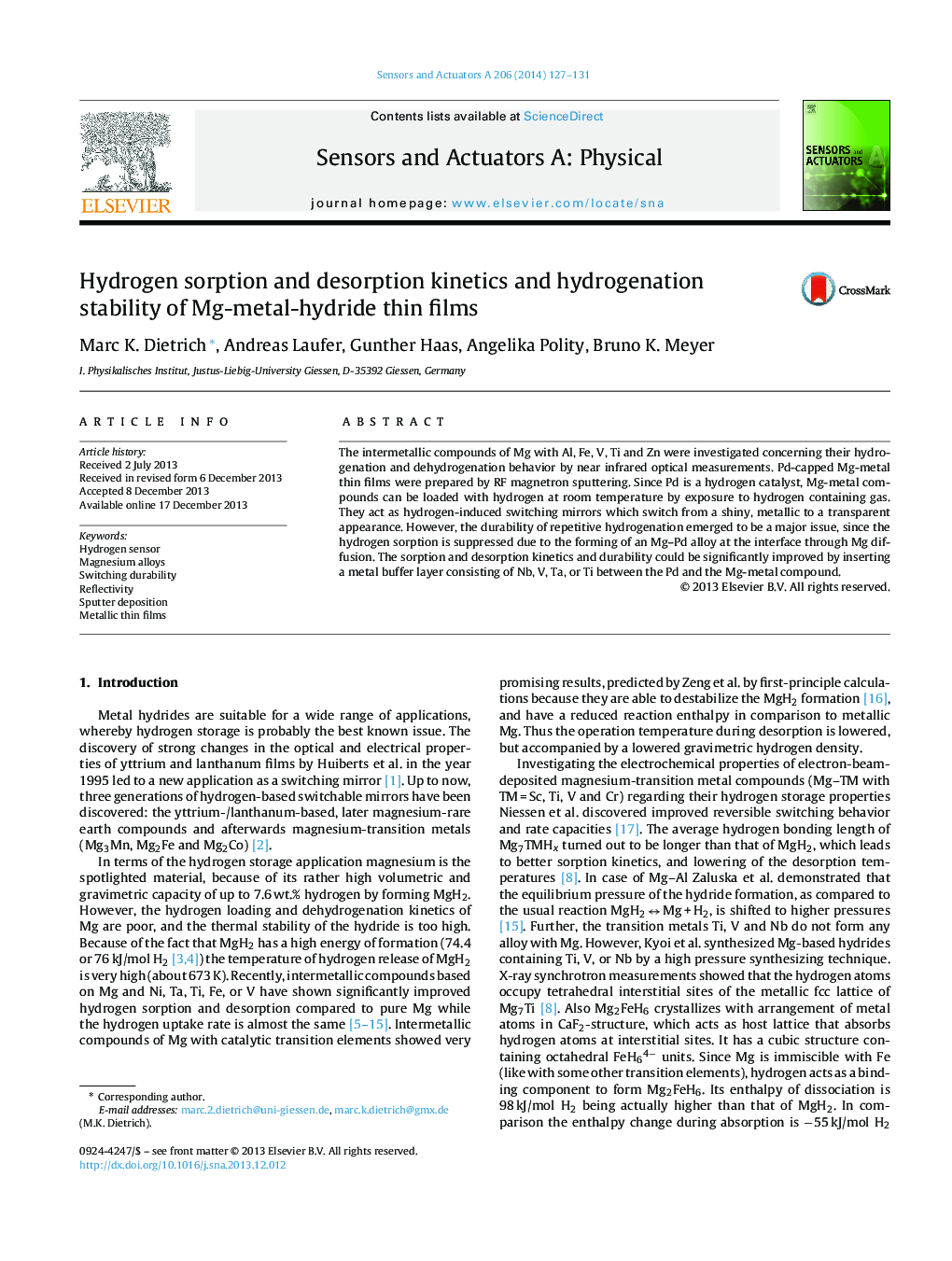| کد مقاله | کد نشریه | سال انتشار | مقاله انگلیسی | نسخه تمام متن |
|---|---|---|---|---|
| 748843 | 1461894 | 2014 | 5 صفحه PDF | دانلود رایگان |

• Mg-metal (Al, Fe, V, Ti, Zn) thin films are compared regarding their hydrogen sensing properties.
• Mg–Fe capped with Pd and a Ti buffer has outstanding switching durability.
• Insertion of a buffer layer improved amplitude and response time as well as switching durability.
The intermetallic compounds of Mg with Al, Fe, V, Ti and Zn were investigated concerning their hydrogenation and dehydrogenation behavior by near infrared optical measurements. Pd-capped Mg-metal thin films were prepared by RF magnetron sputtering. Since Pd is a hydrogen catalyst, Mg-metal compounds can be loaded with hydrogen at room temperature by exposure to hydrogen containing gas. They act as hydrogen-induced switching mirrors which switch from a shiny, metallic to a transparent appearance. However, the durability of repetitive hydrogenation emerged to be a major issue, since the hydrogen sorption is suppressed due to the forming of an Mg–Pd alloy at the interface through Mg diffusion. The sorption and desorption kinetics and durability could be significantly improved by inserting a metal buffer layer consisting of Nb, V, Ta, or Ti between the Pd and the Mg-metal compound.
Journal: Sensors and Actuators A: Physical - Volume 206, 1 February 2014, Pages 127–131